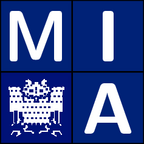
Welcome to the homepage of the lecture
Advanced Image Analysis
Summer Term 2013
Home
About Us
People
Teaching
Research
Publications
Awards
Links
Contact
Internal
Prerequisites – Synopsis – Contents – Assignments – References
Advanced Image Analysis
Lecturer:
Dr. Christian Schmaltz
Summer Term 2013
Lectures (2h) with programming/theoretical exercises (2h)
(6 credit points)
Lectures: Thursday 10-12 c.t. Building E 1.3, Lecture Hall 003
First lecture: Thursday, April 18, 2013.
Tutorials: 2 hours each week, Mo 14-16 c.t.
Tutorials: Building E1.3, Seminar Room 0.14 (theory)
Tutorials: Building E1.3, Cip-Pool 104 (programming)
26/08/2013: The certificates are ready. They can be fetched here. Please note that the secretaries office will be close from September 2 to September 6.
20/08/2013: Results of the second written exam are online. See below for details!
30/07/2013: Results of the first written exam are online. See below for details!
18/07/2013: Example exam questions are now available here.
24/06/2013: The lecture on July 4 will take place in lecture hall 001.
14/05/2013: Due to a public holiday, there will be no tutorial on May 20.
14/05/2013: The registration in HISPOS is possible until Sunday, May 19.
30/04/2013: Due to a conference and a public holiday, there will be no tutorial on May 6, and no lecture on May 9
30/04/2013: The date and time of the exams is now fixed, see here
25/04/2013: The registration is closed. If you still want to participate, please contact me.
18/04/2013: The registration is open!
05/02/2013: Course homepage online. Important news will be posted here and also on the mailing list.
Example - Freehand High Dynamic Range (HDR) Imaging
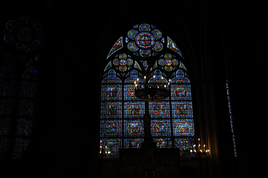
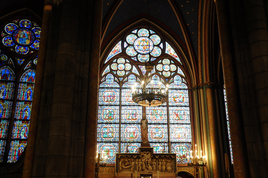
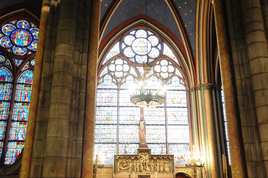
|
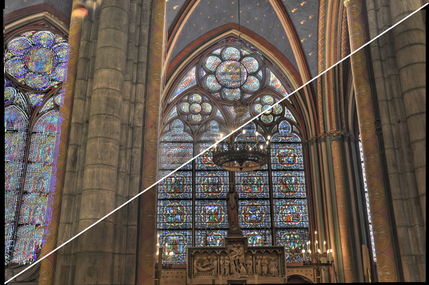
|
| Exposure series. | Tone mapped HDR reconstruction without and with alignment. |
Requires undergraduate knowledge in mathematics (e.g. ''Mathematik für Informatiker I-III''), and elementary C knowledge. Basic knowledge in image processing and computer vision is recommendable. The lectures will be given in English.
In this lecture, we will discuss advanced topics in the fields of image processing
and computer vision.
Most of the presented methods fuse the information from several images in order
to produce a somwhat enhanced image. Examples for such techniques are super-resolution,
high dynamic range (HDR) imaging, tone mapping, and gradient domain techniques.
REGISTRATION
A registration for this lecture is necessary.
You could have registered
for the lecture from Thu, April 18 until Thu, April 25, 2013, 4.30 pm.
Participants of the course can download the lecture materials here after the lecture (access is password-protected). However, be aware that these slides are only provided to support the classroom teaching, not to replace it. Additional organisational information, such as examples and explanations that may be helpful or necessary to understand the content of the course (and thus relevant for the exam), will be provided in the lectures. It is solely your responsibility - not ours - to make sure that you receive this infomation. The topics given here are preliminary and will probably change slightly.
| Date | Topic |
|---|---|
| 18/04 | Introduction, Overview |
| 25/04 | Finding Correspondences |
| 02/05 | Super-Resolution |
| 09/05 | -- No Lecture -- |
| 16/05 | HDR Basics |
| 23/05 | HDR II: Alignment Strategies for Exposure Series |
| 30/05 | -- No Lecture -- |
| 06/06 | HDR III: Optic Flow-based Alignment; Joint Super-Resolution and HDR |
| 13/06 | Tone Mapping I: Global and Local Operators |
| 20/06 | Tone Mapping II: Frequency and Gradient Domain Operators |
| 27/06 | Gradient Domain Techniques I: Basics |
| 04/07 | Gradient Domain Techniques II: Applications |
| 11/07 | Gradient Domain Techniques III : More Applications |
| 18/07 | Summary and Outlook |
| 25/07 | Question hour |
Programming excercises and theoretical assignments are offered as part of the tutorials.
The regular attendence of these excercises is requirement for admission to
the exam.
| Date | Assignment |
|---|---|
| 09/05 | P2 - Programming Assignment Sources | 10/06 | P4 - Programming Assignment Sources |
| 24/06 | P6 - Programming Assignment Sources |
| 08/07 | P8 - Programming Assignment Sources |
| 18/07 | Sample Exam Questions |
Please remember that you have to register online for the lecture/exam
in the HISPOS system of the Saarland University
The first written exam will take place on Saturday, July 27 from 2 PM to 4 PM
in Building E1.3, Lecture Hall 002.
The second written exam takes place on Wednesday, August 14 from 2 PM to 4 PM
in Building E1.3, Lecture Hall 002.
The better grade of both exams will count.
You can inspect your exam sheets on Friday, August 23, 14:00-15:00,
building E1.7, room 4.07 (4th floor).
The following thresholds were applied to determine the grades of both exams:
- 1.0 : 30.0 - 27.0 points
- 1.3 : 26.5 - 25.5
- 1.7 : 25.0 - 24.0
- 2.0 : 23.5 - 22.5
- 2.3 : 22.0 - 21.0
- 2.7 : 20.5 - 19.5
- 3.0 : 19.0 - 18.0
- 3.3 : 17.5 - 16.5
- 3.7 : 16.0 - 15.0
- 4.0 : 14.5 - 13.5
- 5.0 : 13.0 - 0
The detailed distribution of points of the first exam was:
- 27.0 points : 1
- 25.5 points : 2
- 25.0 points : 1
- 24.0 points : 1
- 17.5 points : 1
- 12.5 points : 1
- 5.5 points : 1
- 3.5 points : 1
- 0.0 points : 1
The detailed distribution of points of the second exam was:
- 28.5 points : 1
- 22.5 points : 1
- 21.0 points : 2
- 19.5 points : 1
- 18.5 points : 1
- 18.0 points : 1
- 8.0 points : 1
- 7.5 points : 2
The results of the second exam can be queried via our online query form.
The results from the first exam can still be queried here.
Please note that your final grade will be the best grade out of the two exams!
There is no specific book that covers the complete content of this class.
Many lectures will be based on articles from journals and conferences.
However, the recent book of R. Szeliski covers some of the topics and
additionally summarises most of the intensively studied areas of computer
vision research:
R.Szeliski: Computer Vision: Algorithms and Applications.
ISBN: 978-1-84882-934-3, Springer, Berlin, 2011.
Note: You can download a PDF version of the book here.
MIA Group
©2001-2023
The author is not
responsible for
the content of
external pages.
Imprint -
Data protection